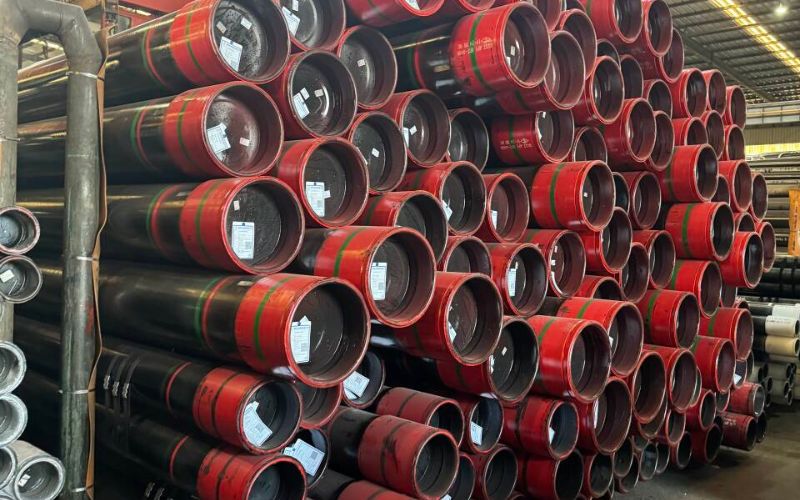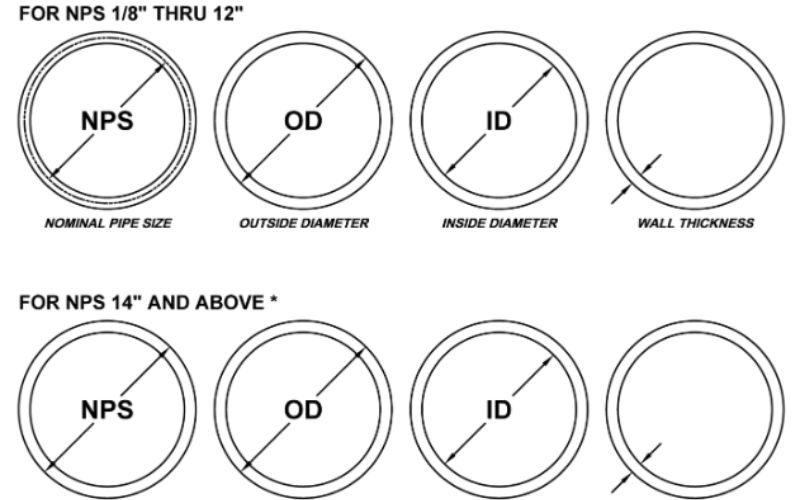When durability and reliability of piping systems are considered, Schedule 40 steel pipe fittings are the most reliable choice in different industries. Connectors, stress relievers, and flow regulators are the uses of these fittings in pipelines where they impart their exceptional strength and flexibility. No matter if you are overseeing a plumbing project, an industrial setup, or a construction assignment, it is important to have a thorough understanding of Schedule 40 steel pipe fittings in order to achieve efficiency and durability that lasts long. This thorough guide consists of the very basics of the fittings you read about, their main features, applications, benefits over other pipe fitting standards, and much more. It will be a great help, whether you are a professional with a lot of experience or a beginner in the field of piping systems, to acquire the necessary and correct information for making good choices.
Introduction to Schedule 40 Steel Pipe Fittings
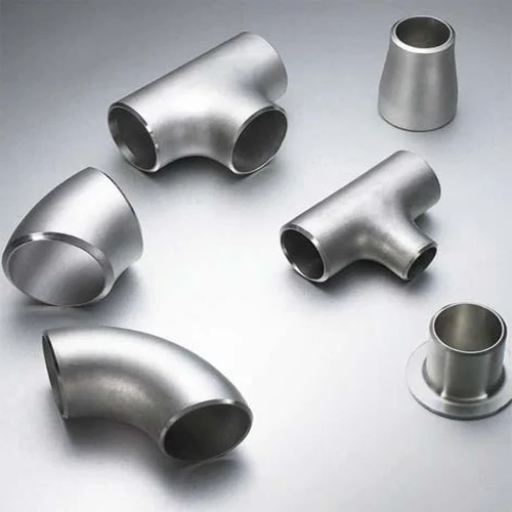
Fittings made of Schedule 40 steel pipes are indispensable components in piping systems, used to connect, control, or change the direction of liquid or gas flow. Besides being strong, pressure-resistant, and durable, these fittings are thus used in a wide range of industries like construction, manufacturing, and plumbing. The “Schedule 40” rating refers to a specific thickness of the wall and a corresponding capacity for pressure, deeming them appropriate for medium-pressure applications. They come in multiple forms, like elbows, tees, couplings, and reducers, to fit different piping layouts. Schedule 40 steel pipe fittings are appreciated for their dependability and adaptability in both home and factory settings.
What are Schedule 40 Pipe Fittings?
Schedule 40 pipe fittings are joints that are used in the piping system to connect, redirect or terminate pipes according to the Schedule 40 standard. The dimensions of these fittings are determined by the American National Standards Institute (ANSI), which specifies a standard wall thickness that represents a compromise between durability and cost. Schedule 40 fittings are usually made of steel, stainless steel, PVC, or CPVC, and are capable of handling moderate pressure and temperature levels. They find use in the transfer of water, gas, oil, and other fluids in residential, commercial, and industrial areas. The most common Schedule 40 pipe fittings are elbows, tees, couplings, caps, and flanges, all of which provide flexibility in the piping system design. The combination of versatility, wide availability, and low cost is why they have become the first choice for a variety of plumbing and construction applications. Moreover, compliance with several regulatory requirements guarantees their safety and dependability.
Common Applications of Schedule 40 Steel Fittings
- Plumbing Systems: The primary application of these systems in both residential and commercial areas is for the distribution of water and drainage.
- Irrigation Systems: Accurately and economically serve the water needs of agricultural and horticultural projects because of their strength and longevity.
- HVAC Systems: The most reliable systems are used in the heating, ventilation, and air conditioning industry for moving fluids and gases.
- Industrial Piping: The primary usage of these pipes is in the chemical, oil, and liquid manufacturing sectors where they are needed to transfer the respective substances.
- Construction Projects: No construction project can have its basic structure built without using such strong and dependable materials for frameworks, scaffolding, and support systems.
Benefits of Using Schedule 40 Steel Pipe
💪 Strength and Durability
Schedule 40 steel pipes are not only strong but also durable. Hence, they can be used for heavy-duty and high-pressure applications without any problem.
🛡️ Corrosion Resistance
These pipes, when coated or galvanized, will have a very long life because they would resist corrosion to a considerable extent.
🔧 Versatility
The pipes can be utilized in numerous applications, from plumbing in residential places to industrial processes, revealing their versatility.
💰 Cost-Effectiveness
The long life and reliability of Schedule 40 steel pipes mean that they provide significant value in the long run, requiring hardly any maintenance.
⚙️ Ease of Installation
Their smooth dimensions and constant supply make them easy to use thus making the installation process less complicated for the workers.
Types of Schedule 40 Steel Pipe Fittings
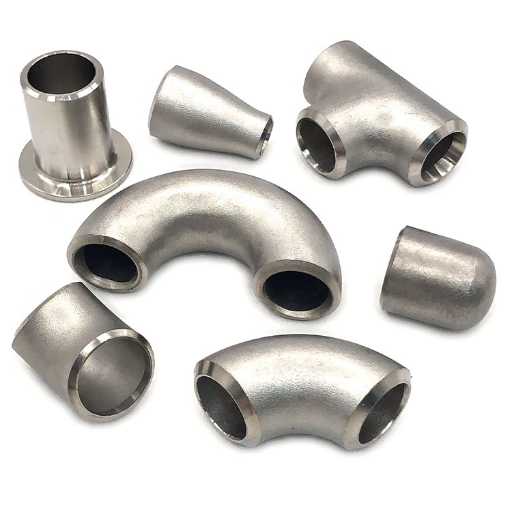
Schedule 40 steel pipe fittings include elbows, tees, couplings, caps, reducers, flanges, crosses, nipples, and unions.
| Fitting | Purpose | Shape | Material | Size |
|---|---|---|---|---|
| Elbows | Directional | Bent | Steel | Varied |
| Tees | Branching | T-shaped | Steel | Varied |
| Couplings | Joining pipes | Cylindrical | Steel | Varied |
| Caps | End closure | Domed/Flat | Steel | Varied |
| Reducers | Size reduction | Conical | Steel | Varied |
| Flanges | Connection | Round/Ring | Steel | Varied |
| Crosses | Multi-branch | Cross-like | Steel | Varied |
| Nipples | Extension | Straight | Steel | Varied |
| Unions | Detachable link | Cylindrical | Steel | Varied |
Elbows: 90 Degree and Other Variations
Elbows are necessary pipe fittings that change the flow direction within a piping system. The 90-degree elbow is the most common type and it changes the flow direction by a right angle. Other kinds of elbows include the 45-degree elbow, which is for smoother directional changes, and the 180-degree elbow that completely reverses the flow direction. Usually, these fittings are made from tough materials such as steel and come in different sizes for different pipe diameters. This wide range of possibilities ensures that they are used in many industries such as plumbing, oil and gas, and construction. Their strong build and flexibility make them a crucial part of intricate piping systems.
Flanges: Types and Sizes
Flanges are vital parts of the piping systems and are used to fix together pipes, valves, pumps, and other equipment. They also allow cleaning, inspection, and maintenance to be performed easily. The primary kinds of flanges are:
- Weld Neck Flanges: They have the strongest connection and are therefore perfect for high-pressure and high-temperature applications.
- Slip-On Flanges: Besides being easy and quick to install, they are also cost-effective making them best for low-pressure applications.
- Blind Flanges: They are used to completely close off the ends of a piping system or equipment.
- Socket Weld Flanges: They are meant for small-diameter, high-pressure pipes.
- Lap Joint Flanges: They are mainly used in applications requiring regular dismantling for inspections or cleaning.
Flanges are produced in different sizes to correspond to various pipe diameters and pressure ratings, thus guaranteeing compatibility and reliability in assorted industrial applications.
Caps and End Connections
Caps and end connections are basic parts used to seal the ends of piping systems safely. They are designed to block leaks and safeguard the integrity of the system. Thus, their application can be found widely in the oil and gas industry, chemical processing, and water management. Depending on the application and the system requirements, caps can be attached by means of threading, welding, or even bolting. End connections, such as threaded, flanged, or grooved, facilitate the construction of the piping system with other components easily and provide a secure, leak-proof fit. Their versatility and reliability are the reasons for their presence in the piping system as well as performance and safety.
Understanding Steel and Carbon Steel in Pipe Fittings
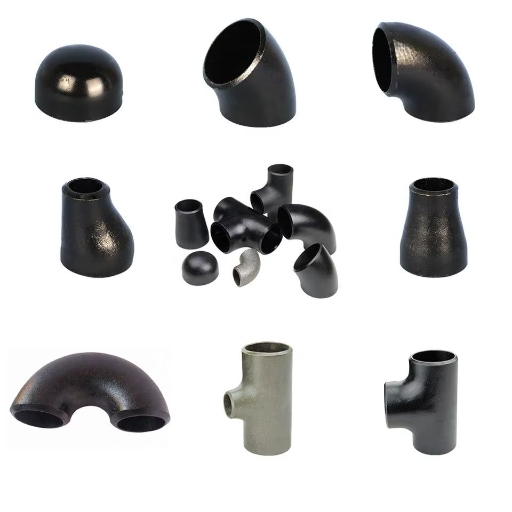
Steel and carbon steel pipe fittings are the primary materials known for their strength, durability, and versatility. Steel is an iron and carbon alloy that can also include other elements, such as chromium or nickel, to improve properties like corrosion resistance and toughness. Carbon steel, or simply steel, is an exceptional type of steel composed of iron and carbon. It offers excellent strength and ductility, making it suitable for high-pressure and high-temperature applications. Their compositions are so versatile that they can be used in almost all industries, such as construction, oil and gas, and chemical processing.
Difference Between Steel and Carbon Steel Fittings
Steel and carbon steel fittings differ in composition, strength, corrosion resistance, durability, cost, and specific applications.
| Key Point | Steel | Carbon Steel |
|---|---|---|
| Composition | Includes alloys | Mostly iron, carbon |
| Strength | High to very high | Moderate to high |
| Corrosion | Resistant | Less resistant |
| Durability | Higher | Moderate |
| Cost | Expensive | Affordable |
| Applications | Versatile | High-pressure, temp |
Benefits of Carbon Steel Weld Fittings
- Strength and Durability: Carbon steel welded fittings provide tremendous strength and durability, allowing them to be used in the most demanding applications in environments with high pressure and high temperature.
- Cost-Effectiveness: While other materials may cost more, carbon steel is relatively cheaper, making it a good choice for large-scale projects.
- Versatility in Applications: These fittings are not only versatile but also widely used across various industries, such as oil and gas, construction, and manufacturing, due to their ability to adapt to different conditions.
- Ease of Installation and Maintenance: The installation and maintenance of carbon steel welded fittings are uncomplicated, which shortens project timelines and reduces downtime.
- Recyclability and Sustainability: The recyclability of carbon steel is 100%, thus the industries that have eco-friendliness as their priority are the ones that opt for this material.
Applications of Stainless Steel vs. Carbon Steel
Both types of steel, i.e., stainless and carbon steel, have been indispensable in various industries, but each has unique properties that determine their use.
Stainless Steel Uses
Stainless steel has gained the utmost importance due to its ability to resist rust, sanitary nature, and the shine it gives. It is broadly applied in the sectors of food processing, medicine, and construction just to name a few. For instance, stainless steel is used for surgical tools, kitchen utensils, and even parts that are regularly subjected to extreme conditions. Its resistance to thermal shocks has also opened up chemical and marine applications.
Carbon Steel Uses
On the other hand, carbon steel has an excellent strength-to-price ratio so it is the most popular material in the building and construction sectors where it is used for bridges, laying down pipes, and making supporting structures. Also, it is almost universally used in the fabrication of tools, vehicles, and heavy equipment. These days, carbon steel is gaining popularity in oil and gas as it is the primary material for making pressure vessels and welded fittings thanks to its ability to tolerate high-pressure situations.
When it comes to picking one of the two steels, the decision often relies on project-specific factors such as environmental conditions, durability needs, and budget constraints. Diverse industry applications are still supported by the fact that the two materials complement each other in their respective strengths.
Technical Specifications of Schedule 40 Steel Pipe
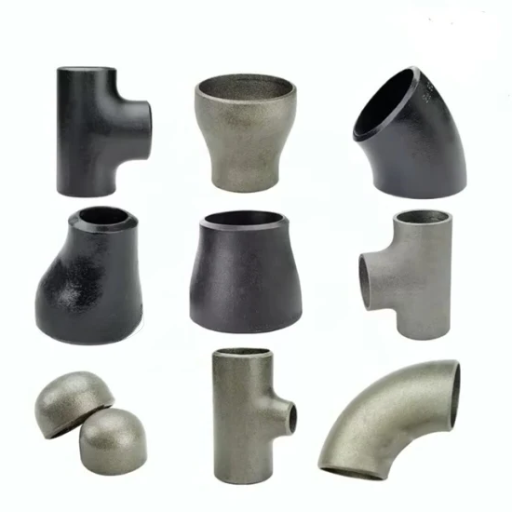
Schedule 40 steel pipe is known for its moderate wall thickness, and it is adaptable in many different applications. The nominal size of the pipe determines the schedule, which indicates its outer diameter (OD) and the wall thickness. It is generally produced using carbon or stainless steel, which are strong and durable materials. The standard pressure rating is different depending on the diameter and the material of the pipe but is generally applicable to low to medium-pressure systems such as plumbing, gas lines, and industrial uses. Schedule 40 steel pipes meet ASTM standards, which guarantee uniformity in quality and performance.
ASTM Standards for Schedule 40 Pipe
In essence, Schedule 40 pipes are primarily subject to ASTM International specifications which deal with quality, safety, and performance. ASTM A53 is the leading standard for carbon steel pipes and includes requirements for chemical composition, tensile properties, and testing methods. In case of stainless steel pipes, while ASTM A312 is still the primary standard, it deals with seamless and welded types of the alloy. Along with such rules as wall thickness, diameter tolerance, and pressure ratings ASTM maintains regularity and dependability throughout the use of the pipes. By following these regulations, Schedule 40 pipes would certainly pass the industry’s tests for durability and functionality.
Size and Class Specifications
The selection of Schedule 40 pipes includes various sizes and categories that are specifically designed for a wide range of industrial and commercial applications. The nominal pipe sizes (NPS) of pipes range commonly from 1/8 inch up to 24 inches with wall thicknesses changing according to the specific size. These pipes are sorted in classes based on the needs of their applications such as pressure ratings and strength of the material. For instance, small diameter pipes are usually found in precise applications like plumbing or gas distribution, whereas large ones are used in structural and high-capacity systems. The size and class together determine the effectiveness of the pipe under the specified operating conditions.
Understanding the Radius of Elbows
The radius of an elbow is the distance along the curvature or bend of the pipe fitting, which determines the sharpness or gradualness of the pipe’s directional change. The elbows are commonly grouped into two categories: short radius (SR) and long radius (LR). A short radius elbow has a radius that matches the pipe’s diameter, making it ideal for cramped areas while still offering more resistance to the fluid than an extended radius elbow. On the other hand, a long radius elbow has a radius about 1.5 times that of the pipe, hence allowing the fluid to flow easily with less resistance and pressure drop. The decision of whether to use short or long radius depends on the particular application and the available space.
Installation and Maintenance of Schedule 40 Steel Pipe Fittings
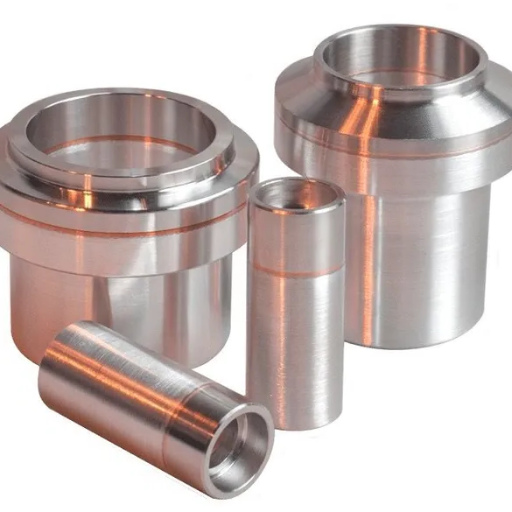
Before fitting the Schedule 40 steel pipe, you must first clean all parts and remove any dirt or rubbish. Then, use the right tools to cut and thread the pipes precisely, put on the thread sealant or Teflon tape to keep leakage at bay. Fasten the fittings tightly, but avoid making them too tight to risk damage. For maintenance, conduct visual inspections of the fittings at regular intervals to check for corrosion, wear, or leaks. Depending on the condition, clean the pipes and replace the damaged parts so that the system can run smoothly and safely.
Installation Guidelines for Pipe Fittings
- Before installation, check that all parts are clean and devoid of any dirt.
- Use the right tools to cut the pipes and thread them correctly.
- Use a thread sealant or Teflon tape on the threads to avoid leaks.
- Make the fittings tight, but also be careful not to damage the parts by over-tightening.
- During maintenance, look for corrosion, wear or leaks at the fittings regularly.
- Keep the pipes and fittings clean so that they can work at their best.
- Quickly change any compromised parts to keep the system running safely and effectively.
Butt Weld Techniques for Better Connections
Butt welding is a basic method for obtaining solid and continuous connections between metal parts. Proper joint preparation is vital for raising the quality of a butt weld. It involves cleaning the surfaces well to get rid of any dirt, oil, or oxidation and making sure the edges are properly aligned with the proper gap for welding. Correctly selecting the welding parameters, including voltage, amperage, and travel speed, is crucial as it results in strong, non-defective welds. Furthermore, using the right filler metal compatible with the base metals results in a firm connection.
For better outcome, it is essential to keep a uniform welding practice. It requires smooth hand movement, correct torch position, and controlling heat input to forestall problems like distortion or burn-through. Welded joint inspection, which includes visual checks and the application of non-destructive testing techniques, can detect any possible defects and thus guarantee that the weld fulfills construction and safety requirements. Following these methods and staying abreast of innovations in welding technology would enable engineers and technicians to provide butt welds that are both reliable and of high quality.
Maintenance Tips for Longevity
To prolong the life of welded joints, my primary maintenance and inspection strategy is based on regularity and timeliness. This includes typical cleaning of the welded sections to prevent rust, monitoring for cracks or flaws, and applying preventive coatings as needed. Also, I prioritize handling any sign of wear or harm right away to prevent further degradation. I can thus keep the welds’ strength and durability by being proactive.
Reference Sources
-
Standard Pipe Schedule and Spec (South Dakota State University)
This document provides detailed specifications for Schedule 40 steel pipe fittings, including standards like ANSI B16.3 and B16.9. -
Piping & Fittings – Building Maintenance & Construction (University of Hawaii Pressbooks)
This resource discusses the use of Schedule 40 pipes in residential construction and their wall thickness. -
Lab 7: Pipe and Fittings (Brigham Young University)
This lab guide provides practical insights into the use of Schedule 40 galvanized steel pipes in engineering applications. - Black Steel Pipe Supplier In China
- Guide for Schedule 40 Black Pipe
Frequently Asked Questions (FAQs)
What are schedule 40 steel pipe fittings?
Schedule 40 steel pipe fittings are various types of steel pipes used in plumbing or industrial applications to connect Schedule 40 pipes. Their main goal is to let the pipe system be directed or changed in size or type of pipe, but still, keep the same integrity as before. Fittings made in elbows, tees, and flanges are the most common types and they all come with particular standards set for durability and performance.
Are schedule 40 pipe fittings available in stainless steel?
Absolutely, the 40 pipe fittings are made of stainless steel. They are known for their excellent corrosion resistance and thus can be used in many different applications; water, chemical and high temperature resistance. So, it is better if you mention stainless steel when making your order and that way you will get precisely what you want.
What types of connections do schedule 40 steel pipe fittings offer?
Schedule 40 steel pipe fittings present a variety of connections such as butt weld, threaded, and socket weld connections. Each one is dedicated to a particular application guaranteeing a strong and leak-proof connection between the pipes. For example, butt weld fittings are frequently used for permanent connections, while threaded fittings provide easy separation and re-connection.
How do I know if a fitting is a 90 degree elbow?
A 90-degree elbow is a distinctive fitting type that permits the piping system to change direction by 90 degrees. A 90-degree elbow can be recognized by its special rounded shape that connects two pipes at a right angle. If you are ordering online, just search for the phrase “90-degree elbow” in the product description.
What is the significance of ASTM standards for schedule 40 fittings?
ASTM standards are of great importance for schedule 40 fittings as they lay down the rules for materials, dimensions, and product quality. These standards are a guarantee that the fittings are going to be safe and perform well so they can be used in different applications. Always look for fittings that meet the relevant ASTM standards to ensure you get quality products when buying schedule 40 fittings.
Do schedule 40 steel fittings come with end connections?
Yes, the schedule 40 steel fittings can have different end connections such as plain and threaded ends. The type you will need to use depends on your application and the installation requirements. Ensure the fittings you choose are compatible with the end connection type of your pipe for a perfect fit.
Conclusion
Schedule 40 steel pipe fittings represent a cornerstone of modern piping systems, offering an exceptional balance of strength, versatility, and cost-effectiveness. Whether you’re working on residential plumbing, industrial installations, or large-scale construction projects, understanding the specifications, types, and proper installation techniques of these fittings is essential for ensuring system integrity and longevity. By following industry standards, conducting regular maintenance, and selecting the appropriate materials for your specific application, you can maximize the performance and lifespan of your piping systems.



